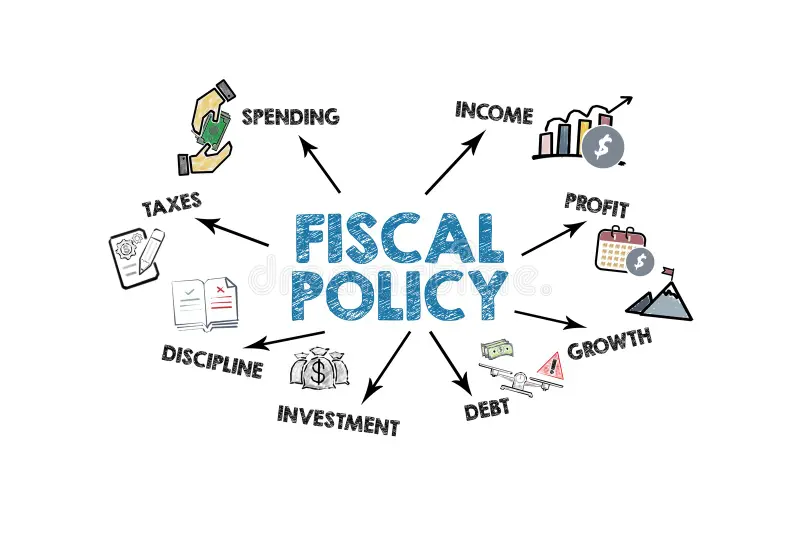When you think about the economy, it’s easy to assume that everything is driven by private businesses or international forces. But the truth is, government economic policies play a massive role in shaping how an economy functions. The decisions made by governments regarding taxation, spending, and money supply can have far-reaching impacts—whether it’s boosting economic growth, controlling inflation, or addressing unemployment.
I’ve seen firsthand how a shift in government policy can transform an entire economy. I remember back when my country implemented major tax cuts to stimulate business investment, and the impact on local job markets and wages was noticeable within a few months. But just as quickly, I saw how changes in monetary policy, like raising interest rates, could slow down that same growth. Understanding how these policies work is crucial for anyone trying to make sense of the economy.
In this post, I’m going to break down the different types of government economic policies—fiscal policy and monetary policy—and explore how each affects the economy in real-world terms.
1. Fiscal Policy: Government Spending and Taxation

How Fiscal Policy Drives Economic Activity
Fiscal policy is all about the government’s decisions on how much to spend and how much to tax. Essentially, it refers to the use of government spending and tax policies to influence the economy. There are two main tools here: taxation and government spending.
I remember when my country’s government decided to increase public spending to address an economic downturn. They invested heavily in infrastructure projects—building roads, bridges, and schools—which, in turn, created jobs for construction workers, engineers, and many others in the supply chain. This kind of spending helps boost demand in the economy, leading to more jobs and higher consumption.
On the flip side, the government can reduce spending or increase taxes to slow down the economy if inflation gets too high or if there’s too much debt. For example, a government might decide to raise taxes or reduce its spending on social programs to reduce the national deficit. This approach can slow down inflation but may also lead to job losses or lower consumer spending.
Expansionary vs. Contractionary Fiscal Policy
A key thing to remember about fiscal policy is that it can either be expansionary or contractionary:
-
Expansionary Fiscal Policy: This occurs when the government increases its spending or cuts taxes to stimulate the economy. It’s typically used during periods of economic downturn or recession.
-
Contractionary Fiscal Policy: Increasing taxes to cool down an overheating economy or reduce inflation.
The goal of fiscal policy is always to maintain a balance—stimulating growth without causing runaway inflation or excessive national debt.
2. Monetary Policy: Controlling the Money Supply
The Role of Central Banks in Economic Stability
Monetary policy, unlike fiscal policy, is mainly handled by a country’s central bank (such as the Federal Reserve in the U.S. or Bank Indonesia). It involves controlling the supply of money in the economy and adjusting interest rates to influence economic conditions.
Central banks control inflation by adjusting the interest rates at which they lend money to commercial banks. When the economy is growing too quickly and inflation is rising, the central bank may decide to raise interest rates. This makes borrowing more expensive and discourages spending and investment, which helps cool down the economy and control inflation.
But when the economy is sluggish and growth is low, the central bank might lower interest rates, making borrowing cheaper. This encourages businesses to invest and consumers to spend, which in turn helps stimulate economic activity.
The Impact of Interest Rates on Economic Activity
The most direct way that monetary policy impacts the economy is through interest rates. When the central bank lowers interest rates, it becomes easier for individuals and businesses to borrow money. This can lead to increased spending and investment in the economy, which helps create jobs and stimulate growth.
For example, I remember when interest rates were lowered to help the housing market recover after a financial crisis. Lower mortgage rates made it easier for people to buy homes, which increased demand in the housing sector and created jobs in construction, real estate, and finance. It was a way for the government to give the economy a boost without directly spending taxpayer money.
3. Government Policy and Inflation: A Delicate Balance
Controlling Inflation Through Policy Decisions
Inflation is one of the most sensitive aspects of economic policy. Inflation is when the prices of goods and services rise over time, reducing the purchasing power of money. Governments and central banks work hard to control inflation because high inflation can erode savings, reduce purchasing power, and create uncertainty in the economy.
The government’s fiscal policies and the central bank’s monetary policies are the primary tools used to control inflation. For example, when inflation is rising too quickly, a central bank may raise interest rates to reduce the amount of money circulating in the economy. Similarly, the government may cut spending or increase taxes to curb demand.
Conversely, during periods of low inflation or deflation (when prices are falling), the central bank might lower interest rates to encourage more spending. And the government might increase spending to stimulate the economy.
In both cases, there’s a delicate balance. Too much inflation can lead to a loss of confidence in the currency, while too little inflation can lead to stagnation and slow economic growth.
4. The Role of Government in Employment and Unemployment
Using Economic Policy to Address Unemployment
Government policies can also play a crucial role in managing unemployment levels. Fiscal policies, such as government spending on public works or providing incentives for businesses to hire, can help reduce unemployment. I’ve seen instances where government-funded job training programs have helped individuals who were laid off due to economic changes retrain for new careers.
Monetary policy, through lower interest rates, can also have an impact on employment. When interest rates are lowered, businesses are more likely to invest and expand, leading to more hiring. The result is increased job opportunities across various sectors of the economy.
However, the government must also be careful with its policies to ensure that they are encouraging sustainable employment and not creating jobs that are only temporary. Long-term job creation often comes from policies that encourage innovation, education, and investment in new industries.
5. The Long-Term Impact of Government Economic Decisions
Creating Sustainable Economic Growth
Government economic policies don’t just affect the immediate state of the economy; they also shape long-term growth. Decisions about infrastructure, education, and technological innovation can have lasting impacts on economic performance.
For example, investments in education can improve the skill level of the workforce, leading to higher productivity and long-term economic growth. Similarly, spending on infrastructure can improve efficiency in the economy, making it easier for businesses to operate and for consumers to access goods and services.
At the same time, long-term economic growth can be hampered by poor fiscal and monetary policies. For instance, if the government keeps running budget deficits without addressing debt, it can lead to higher interest payments and reduced government spending on important areas like health or education.
Conclusion: The Crucial Role of Government in Shaping the Economy
Government decisions, whether fiscal or monetary, have a profound impact on the economy. From controlling inflation and unemployment to ensuring long-term growth, the policies implemented today will determine the economic landscape for years to come. As citizens, it’s important to understand how these decisions shape the economy, so we can make informed choices, whether in business, investing, or simply managing our personal finances.
By keeping a keen eye on government economic policies, we can better understand how the economy works and how we can best navigate it for our own success and prosperity.
